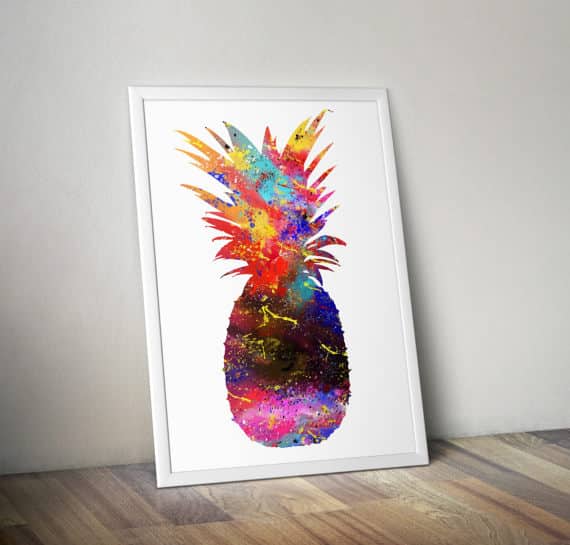Why are pineapples so popular in interior design?
Popping up in everything from wallpaper prints to luxury lamps, pineapples have never been so popular. Apart from being scrumptious to eat, what makes this exotic fruit so special? And what kicked off this fruity trend? We decided it was time to investigate! Read on to find out more about the loveable and glorious pineapple taking pride of place in our home interiors.
Quirky pineapple décor ideas
Tropical prints have been on trend this year on the catwalk and in interior design, with the pineapple topping the bill in home interiors. There is after all nothing more tropical than the humble pineapple. If you are looking to add some tropical cheer to your interior, there are plenty of décor ideas to bring the pineapple into your living spaces. Here are some of the coolest:
- Pineapple lamps and lights – these are a truly rocking addition to any home interior. Stylishly cool and sophisticated lamps with colourful ceramic bases, golden leaf details and a neutral shade are a gorgeous way to bring a tropical statement into the home. A cute string of pineapple lights is a little more playful if that is the look you are going for.
- Pineapple artwork is a real budget friendly way to bring the pineapple décor trend alive in your home. If there’s a budding artist in you, buy yourself a canvas and get painting!


- Pineapple wallpaper – cheer up your living space with a cheeky pineapple print wallpaper. Gold prints work well if you are trying to keep a more serious and chic feel to the place. If funky is more your thing, then to hell with it – go for bold colours and be proud of your pineapple shrine.
- If you just want to pay a cute nod to the pineapple without it taking over your whole home, candle holders, trinket boxes, cushion covers or even a pineapple print duvet cover could be all you need to satisfy your exotic craving.

Pineapple history
Using the exotic pineapple in décor isn’t a sudden new trend. The discovery of the pineapple in the UK goes back to the days of Christopher Columbus. Pineapples originated in South America, but in 1493 were discovered on the island of Guadeloupe by Christopher Columbus who brought the sweet fruit to Europe.
Those who were lucky enough and wealthy enough to come across the golden fruit would show it off as a decoration on their dining table. It was known as the sweet fruit of Kings. It symbolised hospitality or welcome. In an academic paper by Professor Michael Olmert titled The Hospitable Pineapple, he associates the pineapple with Christian beliefs as the plant dies to produce fruit. Christopher Wren used pineapples as finials on the cathedrals he designed. The idea of the pineapple as décor was born all those years ago.
In the British West Indies during the 17th and 18th centuries planters would leave a fresh pineapple by their gates when they were home to welcome guests.
In America, a combination of the sparse supply of pineapples, (they rotted on the hot, humid and slow sea voyage), and the high demand solidified the pineapple’s reputation and gave it somewhat of a status symbol. As a result, the humble pineapple has always been a true celebrity, and the décor trend for pineapples really took off in America where carved wood and stone pineapples were used to decorate entrances.
In Scotland, Lord Dunmore took his love of pineapples to a whole new level. He constructed a garden house with a 37-foot tall pineapple on its entrance turret.
The trend for pineapples to take pride of place in our interiors isn’t a new one. But, don’t let that put you off. It’s an interior design trick that works and keeps reinventing itself.
If you are still hungry to know more about this exotic fruit, here are 5 interesting facts you probably didn’t know about the pineapple!
5 Fun pineapple facts
- George Washington tasted pineapple in 1751 in Barbados, and he declared it his favourite tropical fruit.
- Ananas comosus is the botanical name of the fruit we know as the pineapple. In most languages the name exists as ananas, except in English where we coined it the pineapple.
- Pineapple contains the enzyme bromelain which can break down proteins and tenderise meat.
- One third of the world’s pineapples come from Hawaii – that makes totally tropical sense!
- Pineapples ripen faster upside down.



